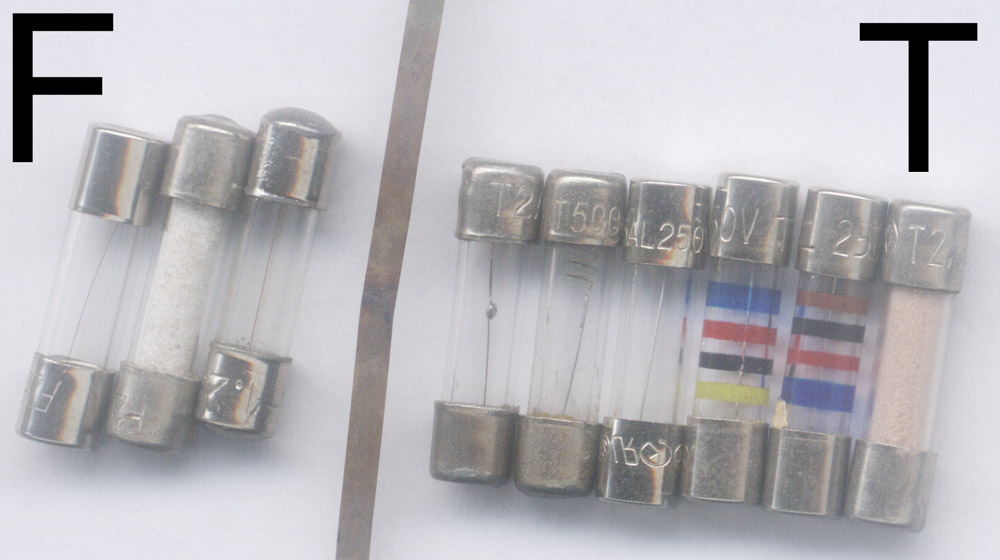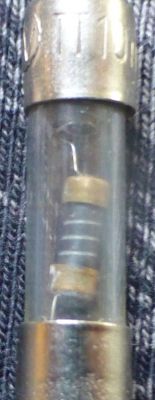Hello,
TT wrote: Hello, I have a question, how to distinguish between fast and slow fuses? Are there any time-delayed ones where the rated current is preceded by the letter T.
power fuses are appropriately marked, the delayed ones have a stylized image of a turtle, although they are hardly used in households.
Whereas electronic fuses; tubular glass (of which there are several sizes) are divided into four groups;
- ultra fast,
- quick,
- standard,
- delayed.
The easiest way (seeing the wire through the glass tube) is to distinguish a slow-blow fuse, because it has a ball (loop) in the center, which serves as an accumulator of thermal energy.
Standard and fast fuses are often indistinguishable in this way, because in both cases it is just a simple wire, but the speed of operation depends on the diameter of the wire and the material it is made of for a given rated current.
In addition, the quick-action fuses sometimes have a spring that tensions the wire, the purpose of which is to accelerate the breaking of the circuit after the wire burns out (especially at lower rated currents).
Ultra-fast fuses have a wire covered with quartz sand, whose task is to quickly extinguish the electric arc created after the wire burns out.
The only sure way is the description on the fuse, although there is a mess in this matter, because the marking system has been changed several times over the years, and sometimes you can find a fuse and a sixty-year-old ...

Besides, Europe used its own (and it happened that the manufacturer meant the fuse's overload integral in a different way - a parameter characteristic for wire-fuse fuses), Uncle Sam used his own, and oblique eyes also his own designations.
TT wrote: If we do not know whether a quick or slow fuse is to be used in the device, what fuse we use.
I also know if I do not know the characteristics of the transient state of current consumption when switching on a given device.
It is not a simple matter; selection of the correct value and type of fuse characteristic.
Therefore, it is a separate (and extensive) branch of electrical engineering called protection of electrical apparatus.
I will only add that one of the world's leading companies producing fuses offers more than twenty types of fuses for a given rated value for the breaking voltage of 250V ~ (RMS).
greetings




